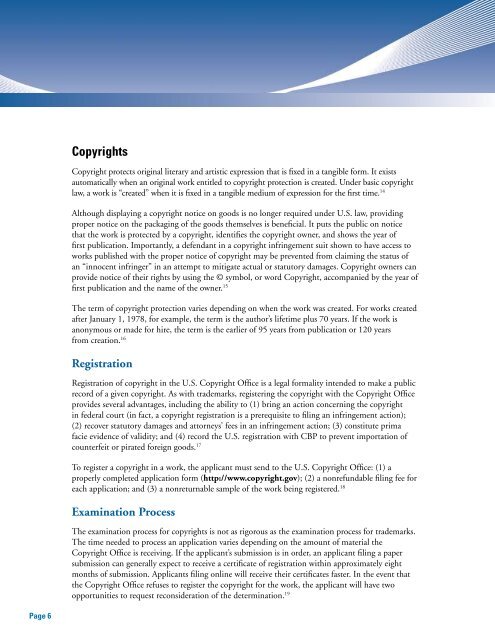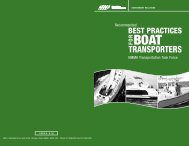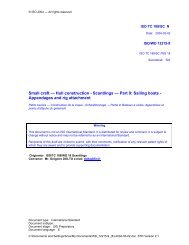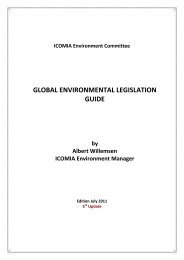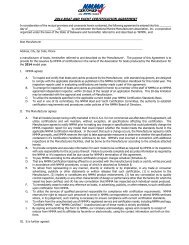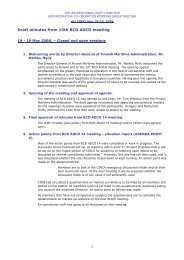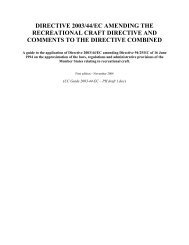Intellectual Property Protection and Enforcement Manual - Ipr-policy.eu
Intellectual Property Protection and Enforcement Manual - Ipr-policy.eu
Intellectual Property Protection and Enforcement Manual - Ipr-policy.eu
You also want an ePaper? Increase the reach of your titles
YUMPU automatically turns print PDFs into web optimized ePapers that Google loves.
Copyrights<br />
Copyright protects original literary <strong>and</strong> artistic expression that is fixed in a tangible form. It exists<br />
automatically when an original work entitled to copyright protection is created. Under basic copyright<br />
law, a work is “created” when it is fixed in a tangible medium of expression for the first time. 14<br />
Although displaying a copyright notice on goods is no longer required under U.S. law, providing<br />
proper notice on the packaging of the goods themselves is beneficial. It puts the public on notice<br />
that the work is protected by a copyright, identifies the copyright owner, <strong>and</strong> shows the year of<br />
first publication. Importantly, a defendant in a copyright infringement suit shown to have access to<br />
works published with the proper notice of copyright may be prevented from claiming the status of<br />
an “innocent infringer” in an attempt to mitigate actual or statutory damages. Copyright owners can<br />
provide notice of their rights by using the © symbol, or word Copyright, accompanied by the year of<br />
first publication <strong>and</strong> the name of the owner. 15<br />
The term of copyright protection varies depending on when the work was created. For works created<br />
after January 1, 1978, for example, the term is the author’s lifetime plus 70 years. If the work is<br />
anonymous or made for hire, the term is the earlier of 95 years from publication or 120 years<br />
from creation. 16<br />
Registration<br />
Registration of copyright in the U.S. Copyright Office is a legal formality intended to make a public<br />
record of a given copyright. As with trademarks, registering the copyright with the Copyright Office<br />
provides several advantages, including the ability to (1) bring an action concerning the copyright<br />
in federal court (in fact, a copyright registration is a prerequisite to filing an infringement action);<br />
(2) recover statutory damages <strong>and</strong> attorneys’ fees in an infringement action; (3) constitute prima<br />
facie evidence of validity; <strong>and</strong> (4) record the U.S. registration with CBP to prevent importation of<br />
counterfeit or pirated foreign goods. 17<br />
To register a copyright in a work, the applicant must send to the U.S. Copyright Office: (1) a<br />
properly completed application form (http://www.copyright.gov); (2) a nonrefundable filing fee for<br />
each application; <strong>and</strong> (3) a nonreturnable sample of the work being registered. 18<br />
Examination Process<br />
The examination process for copyrights is not as rigorous as the examination process for trademarks.<br />
The time needed to process an application varies depending on the amount of material the<br />
Copyright Office is receiving. If the applicant’s submission is in order, an applicant filing a paper<br />
submission can generally expect to receive a certificate of registration within approximately eight<br />
months of submission. Applicants filing online will receive their certificates faster. In the event that<br />
the Copyright Office refuses to register the copyright for the work, the applicant will have two<br />
opportunities to request reconsideration of the determination. 19<br />
Page 6


